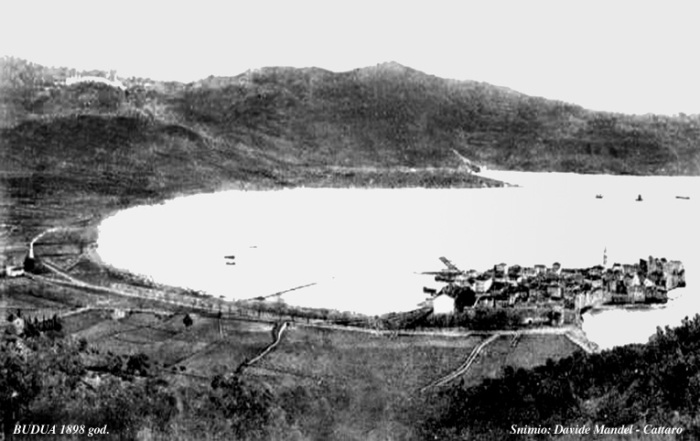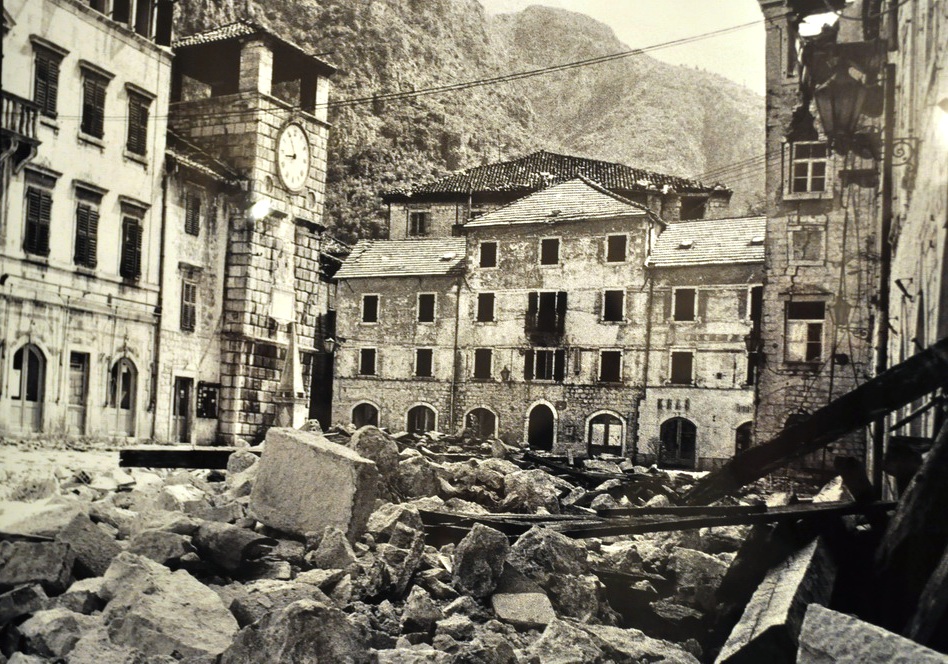brief history of Montenegro in prehistoric times
A brief history of Montenegro in prehistoric times begins in the deep corridors of time. Archeological findings show that the region was inhabited since the Palaeolithic age. Cave paintings and artifacts, especially from the Red Cave near Herceg Novi, bear testament to the rich tapestry of early human civilization in the region.
As centuries rolled by, Illyrians, the ancient inhabitants of the Western Balkans, settled in what we know today as Montenegro. Their fierce resistance to external invasions, particularly from the Roman Empire, has been noted in historical accounts. Nevertheless, by the end of the 1st century AD, Montenegro was gradually incorporated into the Roman province of Dalmatia.
The Middle Ages saw a significant shift in the history of Montenegro. After the fall of the Western Roman Empire, the region faced numerous invasions: Goths, Byzantines, and Slavs, among others. By the 9th century, the region was predominantly Slavic, giving rise to the early foundations of Montenegrin identity. The 10th and 11th centuries saw the establishment of the Principality of Duklja, one of the early Slavic states in the Balkans.
This era also witnessed the spread of Christianity. The rich blend of Roman, Byzantine, and Slavic cultures produced unique architectural marvels and artistic expressions. The stand-out event of this period was the crowning of King Bodin of Duklja in the late 11th century, symbolizing Montenegro’s growing political importance.
In summarizing the brief history of Montenegro in prehistoric times, it’s evident that this region, despite its small size, played a pivotal role in the larger tapestry of European history. The resilience, culture, and evolving identity of Montenegro’s people have left an indelible mark on the annals of history, making the study of the history of Montenegro both fascinating and essential.

Ottoman empire and Its influence on Montenegro
Ottoman empire and Its influence on Montenegro during the time of the Ottoman Empire is a tale of resistance, cultural shifts, and enduring national identity. The Ottomans, who began to expand their territories in the 14th century, soon reached the Balkan Peninsula, dramatically altering its historical trajectory.
By the late 15th century, much of the Balkans had succumbed to Ottoman rule. However, Montenegro’s rugged terrain and the tenacity of its inhabitants made it a challenging region to subdue. While areas of Montenegro were under nominal Ottoman control, the highlands remained largely independent. This was largely due to the “clan” system in Montenegro, where tight-knit communities governed themselves and often resisted foreign rule.
Under Ottoman rule, there were significant societal and religious influences. While a portion of the population converted to Islam, the majority clung to their Christian Orthodox faith, often seen as a symbol of resistance and national identity. Montenegro’s monastic tradition, epitomized by the Cetinje Monastery, played a pivotal role in preserving national consciousness, culture, and religion.
Economically, Montenegro was integrated into the Ottoman system, with taxes levied and occasional forced recruitments into the Sultan’s army. However, frequent uprisings and revolts, such as the one led by Bishop Danilo in the early 18th century, highlighted the Montenegrins’ relentless spirit of resistance.
Reflecting upon this era in the history of Montenegro, it becomes evident that while the Ottomans influenced the cultural, social, and political fabric of Montenegro, they couldn’t suppress its enduring spirit. Montenegro’s resilience during the Ottoman era is a testament to its people’s unwavering determination to preserve their identity, traditions, and autonomy. The legacy of this period remains palpable in the country’s cultural heritage and collective memory, contributing to the rich tapestry of the Ottoman empire and Its influence on Montenegro.

19th century Montenegro on the path to independence
the 19th century Montenegro on the path to independence marked a transformative period in the history of Montenegro, characterized by its fierce struggle for independence and the establishment of national identity. As Europe underwent significant political and social changes, Montenegro found itself at the crossroads of foreign ambitions and its own aspirations for sovereignty.
At the dawn of the century, while still under the influence of the Ottoman Empire, Montenegro was witnessing a growing sense of national consciousness. The leadership of individuals like Bishop Petar I Petrović-Njegoš played a critical role in fostering unity and resistance against Ottoman rule. His reign saw significant steps toward administrative and social reforms, laying the groundwork for Montenegro’s future as a modern state.
Throughout the century, the history of Montenegro was marked by various uprisings and wars aimed at achieving full independence. The Russo-Turkish Wars, in which Montenegro was a valuable ally to Russia, allowed it to gradually expand its territories and assert its autonomy. With the Treaty of Berlin in 1878, Montenegro’s independence was officially recognized by the major European powers. It was a momentous event, the culmination of years of struggle and diplomacy.
However, with independence came challenges. Montenegro, though free from Ottoman rule, now had to navigate its relationships with neighboring countries, particularly as the Balkans remained a volatile region. The need for modernization, both socially and administratively, was evident. Prince Nikola I, who ascended the throne in 1860, undertook this task, aiming to transform Montenegro into a European-style kingdom. He introduced legal reforms, modernized the army, and established diplomatic relations with several countries.
Reflecting on this epoch in the history of Montenegro, it is evident that the 19th century was foundational. Montenegro emerged from centuries of foreign domination, forging its path with resilience and vision. 19th century Montenegro on the path to independence not only solidified its place on the European map but also enriched the cultural and historical heritage that the nation cherishes today.

World War I and II historical overview of Montenegro
World War I and II historical overview of Montenegro is marked by challenges, resilience, and significant changes. As Europe was plunged into turmoil, Montenegro found itself embroiled in conflicts that would reshape its political and societal landscape.
At the onset of World War I, Montenegro aligned itself with the Entente Powers, notably Serbia, against the Central Powers. Although having a smaller army, the Montenegrin forces showed commendable bravery, notably in battles like the Battle of Mojkovac where they held back Austro-Hungarian forces, providing a strategic advantage for their Serbian allies. However, by 1916, Montenegro was occupied by Austro-Hungarian troops, an occupation that lasted until the war’s end.
The post-WWI period was transformative in the history of Montenegro. In 1918, a controversial decision led to Montenegro’s unification with Serbia, eventually becoming a part of the newly formed Kingdom of Yugoslavia. This merger saw mixed reactions, with some viewing it as a loss of Montenegrin sovereignty.
The shadow of World War II brought even more complex challenges. Initially, Montenegro was occupied by Italian forces after the Axis invasion of Yugoslavia in 1941. However, this occupation sparked a strong resistance movement. Many Montenegrins joined the Yugoslav Partisans, fighting against both Italian and later German occupations. The courage and tenacity of these resistance fighters played a significant role in the larger anti-Axis efforts in the Balkans.
Post-WWII, the World War I and II historical overview of Montenegro saw another shift as it became a federal unit of the Socialist Federal Republic of Yugoslavia under Josip Broz Tito. The post-war era brought significant changes in terms of industrialization, education, and social reforms.
In conclusion, the World Wars were more than just military conflicts for Montenegro; they were pivotal points that defined its national identity, sovereignty, and place in modern European history. The resilience and adaptability displayed throughout these tumultuous times have become an indelible part of the historical narrative of Montenegro.

post-war era: Montenegro within Yugoslavia and journey to independence in the 21st century
The post-war era: Montenegro within Yugoslavia and journey to independence in the 21st century is deeply interwoven with its relationship to the Socialist Federal Republic of Yugoslavia. The aftermath of World War II set the stage for Montenegro’s political and social trajectory for the latter half of the 20th century, culminating in its decision to seek independence in the 21st century.
After the war, Montenegro, as one of the six constituent republics, became an integral part of Tito’s Yugoslavia. This period, marked by socialism, non-alignment, and a degree of economic modernization, brought about significant changes to Montenegrin society. Infrastructure development, urbanization, and educational advancements characterized this era. The shared history of Montenegro within Yugoslavia fostered a unique blend of national identities, with Montenegrins balancing their distinct cultural heritage with the broader Yugoslav identity.
However, as the 20th century neared its end, the unity of Yugoslavia began to fray. The 1990s were marked by ethnic tensions, economic challenges, and the rise of nationalist sentiments across the republics. The tumultuous decade saw the disintegration of Yugoslavia through a series of brutal conflicts, yet Montenegro’s path during this period was unique. Initially allied with Serbia in a Federal Republic, Montenegro’s leadership under Milo Đukanović began to seek greater autonomy, particularly in the face of Serbia’s escalating confrontations with NATO.
The history of Montenegro in the 21st century is highlighted by its pursuit of full sovereignty. In 2006, following a referendum, Montenegro declared its independence from the State Union of Serbia and Montenegro. This pivotal moment solidified Montenegro’s position as an independent nation, keen on carving its path in the modern geopolitical landscape. Following independence, Montenegro has sought closer ties with the West, becoming a NATO member in 2017 and actively pursuing EU membership.
In conclusion, the late 20th and early 21st century have been transformative periods in the history of Montenegro. From a socialist republic within Yugoslavia to an independent nation charting its course, Montenegro’s journey showcases the nation’s resilience, adaptability, and unwavering pursuit of self-determination.

